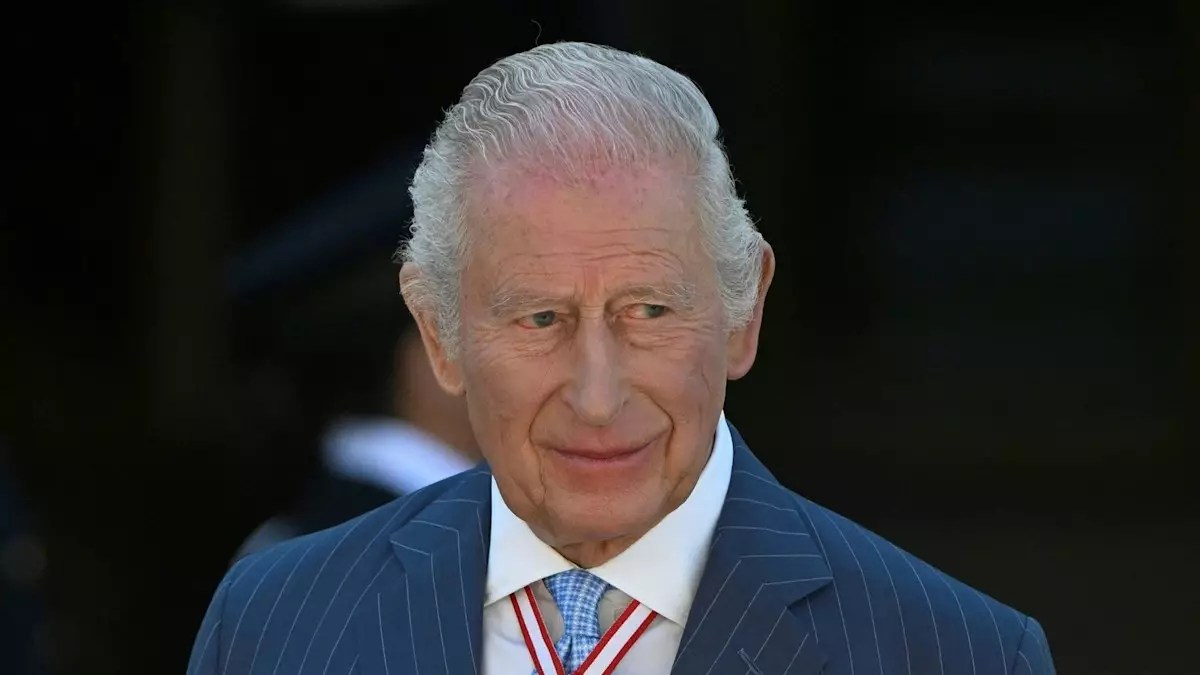On a seemingly bright Sunday morning, King Charles III was seen beaming at his admirers as he made his way to St Mary Magdalene Church in Sandringham. The 76-year-old monarch, dressed impeccably in a dark grey suit paired with a crisp white shirt and tie, appeared to embody the vitality and charm expected of a royal figure. However, the typically full tableau was somewhat incomplete—Queen Camilla’s conspicuous absence drew attention amidst the warm interactions. Her nonattendance raises questions about the couple’s balance between public duties and personal well-being, especially considering their recent engagements that occurred during their trip to Canada.
Is this an occasional absence or indicative of a broader trend in royal life? Observing their public appearances closely reveals an evolving dynamic within the royal partnership. While it’s easy to interpret her missing presence as a benign choice for rest, it highlights the realities of navigating life’s demands, including health considerations and the need for respite before a packed summer schedule. Public life as monarchs undoubtedly comes with pressures; perhaps, in downplaying their presence, they emphasize a much-needed human element of vulnerability.
Taken by Grace: King Charles III’s Connection with Canada
The recent trip to Canada served as an illuminating chapter for King Charles III. The King’s engagements culminated in a heartfelt speech during the state opening of Parliament, reflecting his commitment and connection to the nation—and perhaps a poignant reminder of the historical relationship between the monarchy and Canada’s citizens. Phrases like “a reset of that relationship” encapsulate a shift toward a more approachable monarchy, reflecting the evolving role of royal duties in contemporary society.
The responses from the Canadian public were overwhelmingly positive. This warm reception showcased King Charles’s capacity to touch hearts, not merely through royal persona but rather as an individual devoted to public service. Through personal touches—shaking hands, exchanging pleasantries—he bridged the gap between the crown and commoner, as visible in his engagement during outreach events like the gathering in Lansdowne Park. Such details matter. In a time where the royal family navigates both legacy and modernity, these moments signify more than just ceremonial procedure; they represent an important affirmation of connection and commitment.
Confronting Health Challenges with Resilience
Despite the dazzling public appearances, undercurrents of personal challenges are also part of the narrative. As King Charles navigates his health journey, specifically managing cancer, it poses a pivotal question regarding his future role. Insight from royal aides reveal that his determination to live life fully—persevering both in public forums and personal routines—speaks volumes about his character and resolve. The King’s ongoing treatment serves as a backdrop to these engagements, transforming how we perceive his public image.
The notion of “managing” illness as opposed to succumbing to it reveals a striking resilience. In our society, where the physical health of public figures often dictates their public presence, Charles exemplifies a departure from this norm. Is this approach—integrating personal health management with public service—a reflection of the evolving expectations from leaders in any domain? Indeed, the advances in medical science are a beacon of hope, allowing King Charles to maintain an active presence despite the trials his health presents.
The Power of Personal Connection
The essence of royal duty has often been debated, leading to a broader discourse about the significance of personal connection in leadership. People crave authenticity, a quality that Charles appears to naturally uphold. The warm sentiments expressed during his Canadian tour reveal that these candid moments resonate far deeper than ceremonial gestures. The willingness to showcase vulnerability while still fulfilling royal responsibilities could bridge a gap—a means to show that one can face personal challenges without distancing from the communal experience.
In contemporary society, where distance often characterizes leadership, King Charles III’s path seems not only refreshing but necessary. The blend of humility, accessibility, and resilience imparts a lesson for leadership, whether royal or otherwise. Balancing public expectations while nurturing personal circumstances is no easy feat, yet Charles seems undeterred. The royal family, especially in light of these recent circumstances, offers a compelling study of how we can navigate our complexities and commitments while remaining connected to the communities we serve.







Leave a Reply